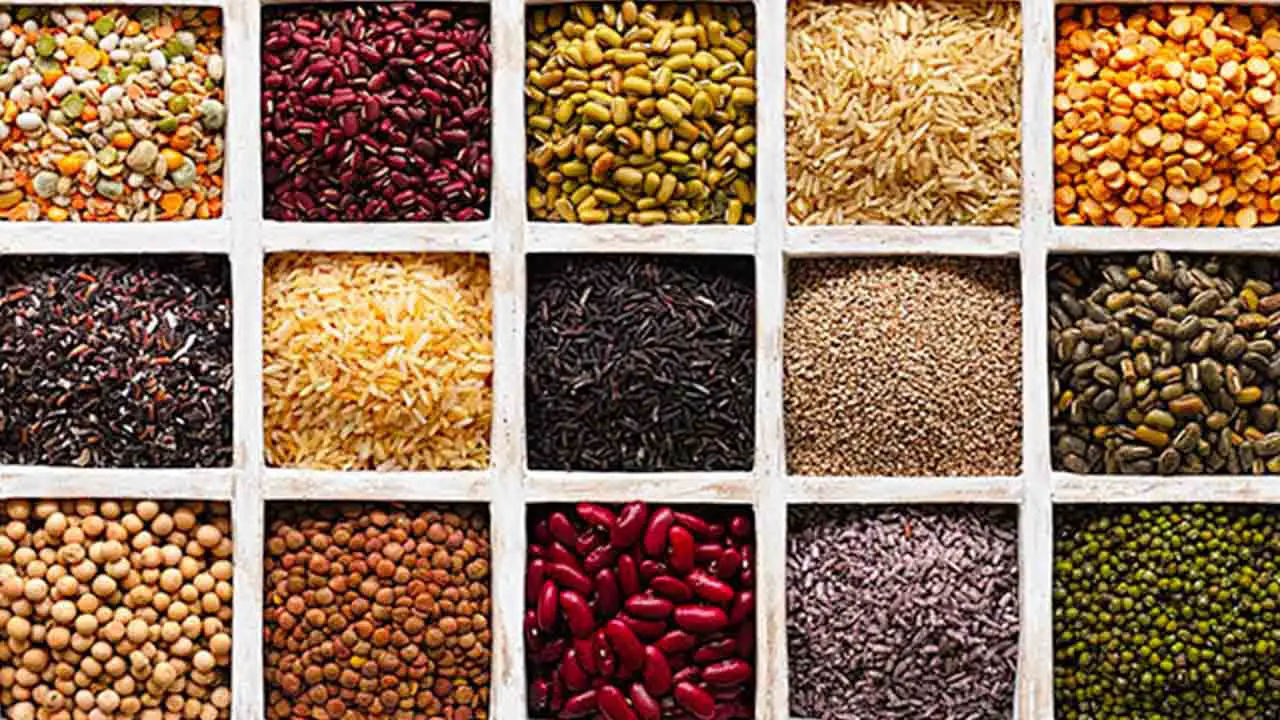Chili is a popular and comforting dish many people worldwide enjoy. Whether you like it hot and spicy or mild and flavorful, it’s a great meal option you can customize. However, one common problem that many people face while preparing chili is adding too much salt to the dish.
This can ruin the taste and make it unpleasant to eat. If you’ve ever found yourself in this situation, don’t worry, you’re not alone. Here we’ll be sharing some tips and tricks on how to fix chili too salty. We understand the frustration of having a dish that doesn’t taste as good as it should, and we’re here to help you fix it.
We’ll be discussing various methods that you can use to reduce the saltiness in your chili, including adding more liquid, using acid, and diluting the chili with unseasoned ingredients.

Why Chili Becomes Too Salty

Chili is a popular dish that many people can enjoy. The spices and flavors can be adjusted to suit individual tastes, but sometimes the dish can become too salty. There are several reasons why chili can become too salty, including using too much salt during the cooking process, adding salty ingredients such as canned tomatoes or cheese, or using a salty stock as a base.
One of the most common reasons chili becomes too salty is the use of canned beans or chili. These products often contain added salt, and when combined with other salty ingredients, the dish can quickly become overpowering. In some cases, the saltiness may not be noticeable until the chili has been simmering for a while, as the flavors meld together.
Chili Too Salty – Salvaging Your Chili With Ease

If your chili too salty, you can try several quick fixes. Firstly, adding more water or unsalted broth can dilute the saltiness. You can also increase the chili’s volume by incorporating additional unsalted ingredients like tomatoes, beans, or vegetables.
Another method is to balance the flavors by adding sweetness (like a bit of sugar or honey) or acidity (such as vinegar or lemon juice). If possible, consider making a second batch without salt and mix the two to even out the seasoning. Ultimately, taste testing throughout the process will help you control the saltiness effectively.
Dilution
If your chili is too salty, dilution is an effective remedy to balance the flavors. To begin, increase the quantity of the other non-salty ingredients in the chili, such as tomatoes, beans, or vegetables. Additionally, consider doubling the recipe without adding more salt, which will effectively reduce the overall salt concentration.
Another method is to add more liquid components, such as water, broth, or tomato sauce, which will disperse the salt and lessen its impact on the taste. Incorporating ingredients with natural sweetness, like a touch of honey or brown sugar, can also help counteract the saltiness. If you have time, prepare a second batch of chili without salt and mix it with the original chili to dilute the excessive salt. Remember to taste-test along the way to achieve the desired balance in flavor.
Add More Liquid:
If your child is too salty, adding more liquid can be an effective way to balance the flavors. Diluting the salt concentration by incorporating additional liquid, such as water, vegetable broth, or tomato sauce, will help reduce the overall saltiness. Start by adding small amounts of liquid at a time, stirring well and tasting after each addition, to avoid making the chili too watery.
To enhance the flavor, consider including diced tomatoes, onions, garlic, and bell peppers to counter saltiness. Adding a touch of sweetness from a pinch of sugar or a dash of honey can also help mellow out the excessive salt.
Another approach is to bulk up the chili by adding more ingredients like beans, corn, or potatoes, which can help spread out the salty taste. Don’t forget to adjust any other seasonings accordingly to maintain a well-balanced and delicious chili. Experiment until you achieve the desired taste and consistency.
Potatoes Or Rice
Your Potatoes or Rice Chili turned out too salty, don’t fret; there are simple ways to fix it. Firstly, dilute the salty flavor by adding more of the main ingredients—potatoes or rice—along with some additional non-salty liquids like vegetable broth or water. This will help balance the seasoning.
Secondly, consider adding acidity to cut through the saltiness. A splash of lime or lemon juice can work wonders in this regard. Another helpful tip is to include some sweetness to counteract the saltiness.
You can do this by adding a touch of honey, maple syrup, or even a bit of brown sugar. Lastly, incorporating more spices or herbs like paprika, cumin, or cilantro can also help distract the taste buds from the excessive saltiness. Remember to adjust the other seasonings as needed, and with these tricks, you’ll rescue your chili and create a flavorful dish.
Acidic Ingredients

Acidic ingredients can help to balance the flavors. This elements like tomatoes, vinegar, or citrus fruits can counteract the excessive saltiness and enhance the overall taste. Tomatoes, commonly found in chili recipes, contain natural acidity that can mellow out the saltiness without diluting the dish too much.
Additionally, a splash of vinegar or a squeeze of lemon or lime juice can work wonders in cutting through the salt and providing a tangy twist. To fix your salty chili, add a small amount of acidic ingredients at a time, tasting as you go to achieve the desired balance.
Be cautious not to overcompensate, leading to an overly sour chili. Adjust other seasonings accordingly to maintain the perfect harmony of flavors. With a bit of experimentation and careful adjustments, you can rescue your chili and transform it into a well-balanced and delicious dish.
Sweetness
Sweetness Chili is a delicious and popular dish known for its perfect balance of sweet and spicy flavors. However, sometimes, it may turn out too salty, which can be disappointing. To rectify this issue, there are several simple methods you can try. Firstly, consider diluting the saltiness by adding more of the other ingredients, like sweetness from sugar or depth from vinegar.
Another approach is to increase the quantity of the main base, such as tomatoes or beans, to spread the saltiness throughout the dish. Alternatively, a splash of lime juice or lemon zest can counterbalance the excessive saltiness with a refreshing tang.
Additionally, you can mix in a peeled raw potato to absorb some salt during cooking. Remember to taste and adjust as you go to achieve the desired flavor. These adjustments will help rescue your Sweetness Chili and make it a crowd-pleasing delight.
Dairy:
There are several ways to balance the flavours and salvage the dish. First, consider adding more of non-salty ingredients, such as additional vegetables, beans, or dairy (like sour cream or yoghurt) to dilute the saltiness. You can also increase the quantity of the chilli base without adding more salt, like tomato sauce or broth.
Another option is to incorporate a small amount of a sweet or acidic element, like sugar, honey, lime juice, or vinegar, to counteract the saltiness. Alternatively, you could create a larger batch of chili without salt and mix it with the salty one to achieve the desired taste. Lastly, add cooked unseasoned rice, pasta, or potatoes to absorb the excess salt if the chili permits. Remember to taste as you go to avoid overcompensating and to achieve a balanced and delicious dairy chili.
Beans Or Grains

Beans or Grains Chili turned out too salty, there are several remedies you can try to balance the flavours. Firstly, consider diluting the chili by adding more unsalted beans or grains and additional vegetables like tomatoes or bell peppers. Increasing the volume of the dish can help distribute the salt more evenly.
Another option is to make a second batch of chili without salt and mix it with the salty one. Alternatively, you can add some acidity to counteract the saltiness, such as a splash of lime or lemon juice or a tablespoon of vinegar. Adding a bit of sweetness from a teaspoon of sugar or a drizzle of honey can help further mellow the saltiness.
Remember to taste the chili as you adjust the seasoning, ensuring you don’t overcompensate. Serving the chili with unsalted rice or plain bread can also help reduce the overall saltiness.
Tomatoes

If your tomato chili turned out too salty, there are several steps you can take to remedy the situation. Firstly, try adding more tomatoes or other non-salty ingredients like beans or vegetables to dilute the saltiness. Another option is to increase the volume of the chili by making a larger batch without adding more salt. You can also try adding a splash of lemon juice or vinegar to counteract the saltiness.
If you have enough time, you could make a second batch of chilli without salt and combine it with the salty one. Additionally, potatoes absorb excess salt, so adding a few diced potatoes and cooking them until tender might help reduce the saltiness. Remember to taste and adjust the seasoning gradually as you go. With these techniques, you should be able to salvage your tomato chili and enjoy a flavorful and balanced dish.
Spice It Up
If your Spice It Up Chili turned out too salty, there are several remedies to balance the flavors and salvage the dish. Firstly, consider diluting the saltiness by adding more liquid, such as water, low-sodium broth, or even a can of unsalted tomatoes. Alternatively, increase the batch size by incorporating extra ingredients like beans, vegetables, or ground meat to disperse the saltiness.
Another method is to counteract the saltiness with acidity. Squeeze in some fresh lime or lemon juice to help offset the excessive saltiness. Additionally, adding a teaspoon of sugar or honey can also help to balance the flavours. Furthermore, if time allows, you can cook a small portion of unseasoned chili and mix it with the salty batch, slowly integrating the flavours to achieve the desired taste.
Conclusion
So, there you have it, folks. These tips and tricks will help you fix your chili if it turns chili too salty. Don’t let too much salt ruin your delicious bowl of chilli. With these easy hacks, you can easily adjust the salt level and bring back your desired flavour. So, go ahead, experiment and enjoy your perfect bowl of chilli.
The potato will absorb some of the salt, and help balance out the flavours. If the chilli is too thick, add a splash of water or broth which will also help to dilute the saltiness. Add a tablespoon of tomato paste or a can of diced tomatoes to the chili. Remember, a little seasoning is good, but too much seasoning can be fixed with creativity and know-how.
FAQ
1.Can I Add More Water To Dilute The Saltiness?
Ans: Adding more water to dilute the taste of chili salt is not a good idea. Doing so may make it worse. Instead, you can try adding other ingredients to reduce the saltiness, such as beans, tomatoes, or vinegar.
2.What’s The Best Way To Reduce Saltiness In Chili?
Ans: One effective way to reduce saltiness in chili is to add a few peeled and diced potatoes. They will absorb the excess salt while cooking, reducing the overall sodium content. Another option is to add spices such as oregano, cumin, and coriander, which are also effective at reducing saltiness.
3.How Many Potatoes Should I Use To Fix Salty Chili?
Ans: The amount of potatoes to use for fixing salty chili will depend on your chili. Two or three potatoes may be sufficient for a medium-sized pot of chili. However, you may want to adjust this amount depending on the size of your pot of chili.
4.Can I Use Unsalted Broth To Fix My Salty Chili?
Ans: Yes, you can use unsalted broth to fix your salty chili. Substituting some of the salty broth with unsalted or low-sodium broth can help reduce overall saltiness.
5.Your Chili Is Still Too Salty After Trying These Methods. What Else Can I Do?
Ans: If your chili is still too salty, there are a few other options you can try in order to make it more palatable. You can add more spices, such as onions, cumin, and chili powder, or try cooking it at a lower temperature.
